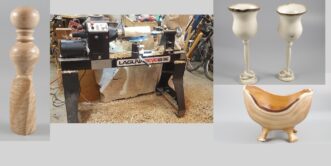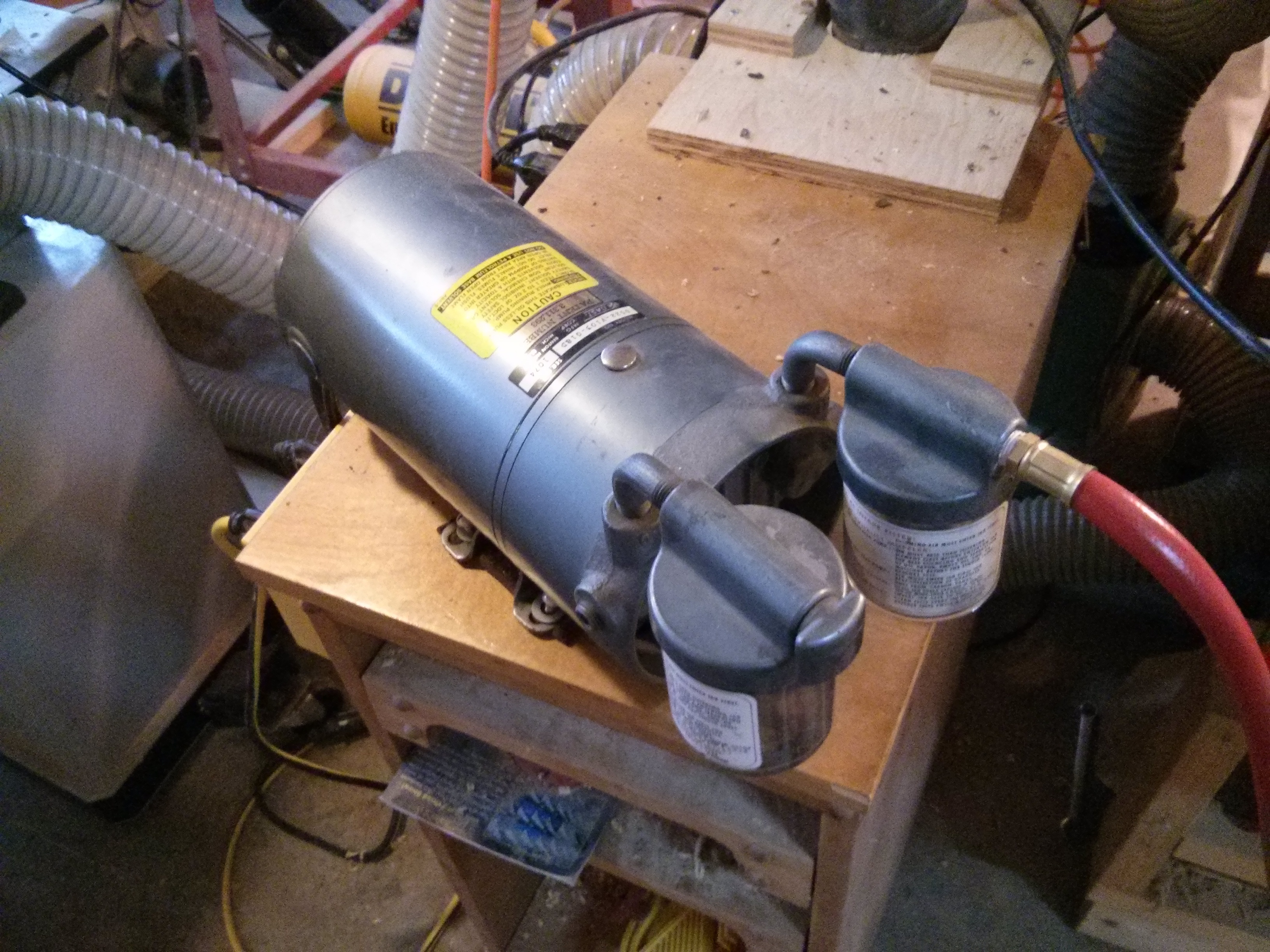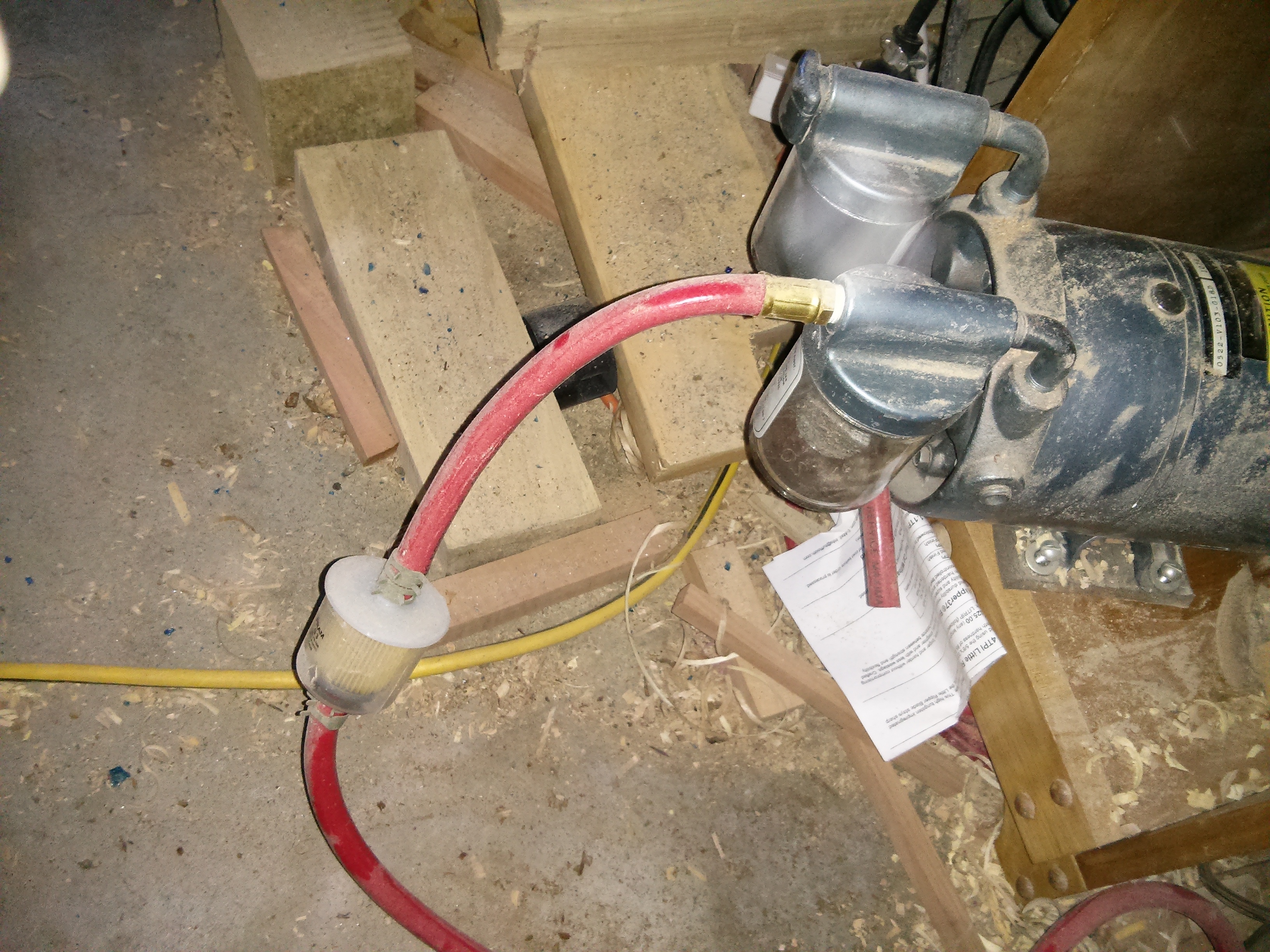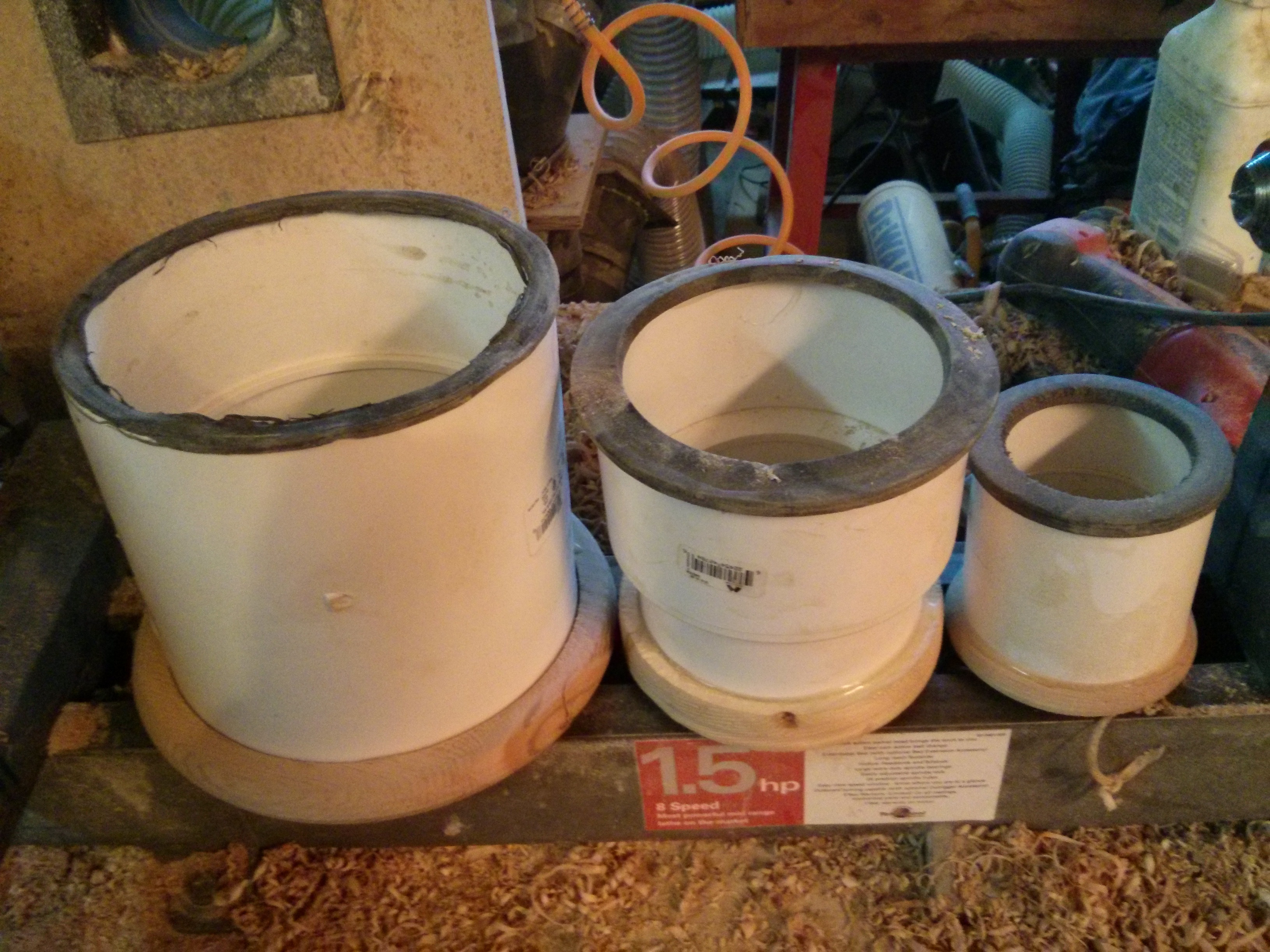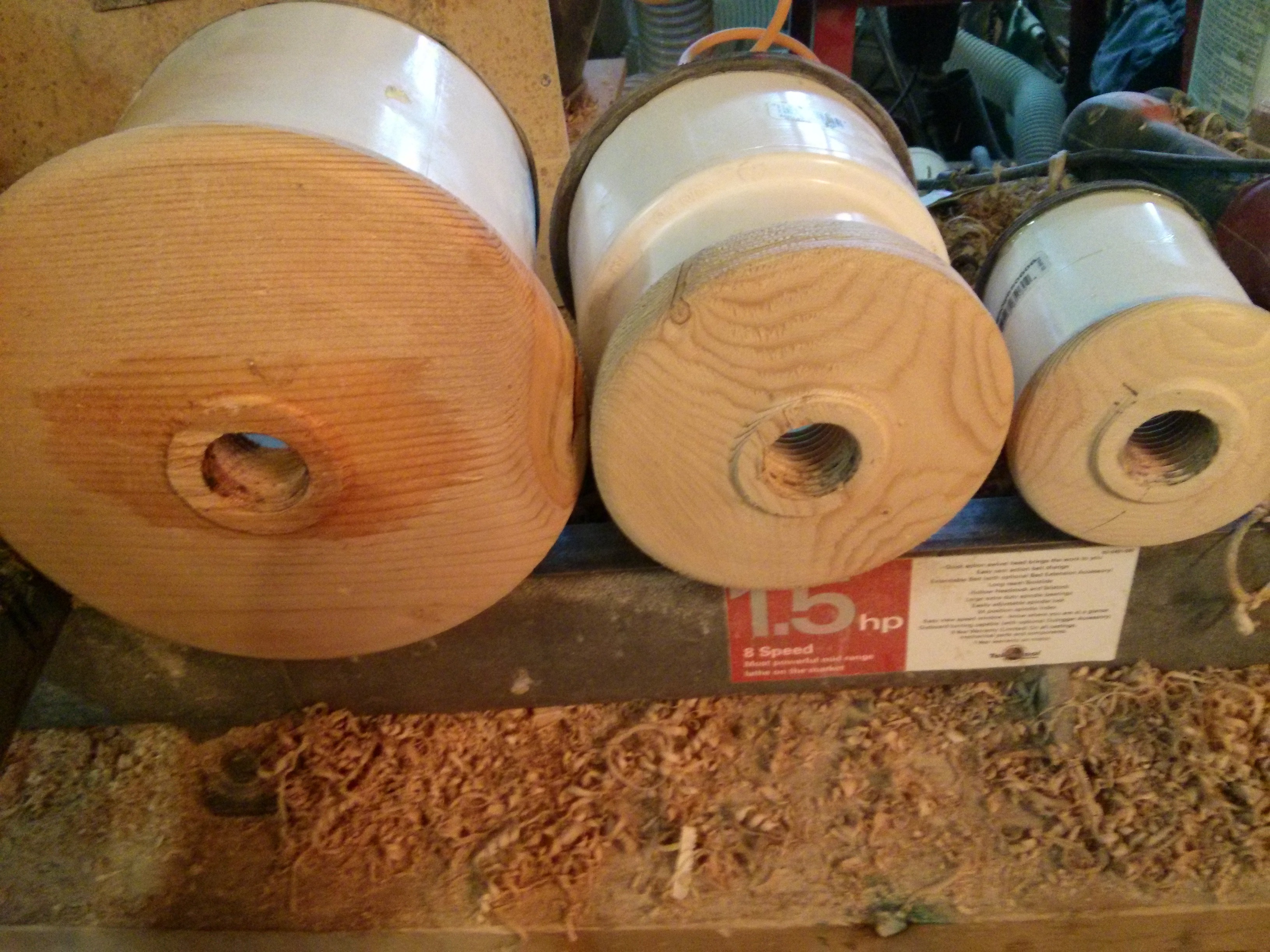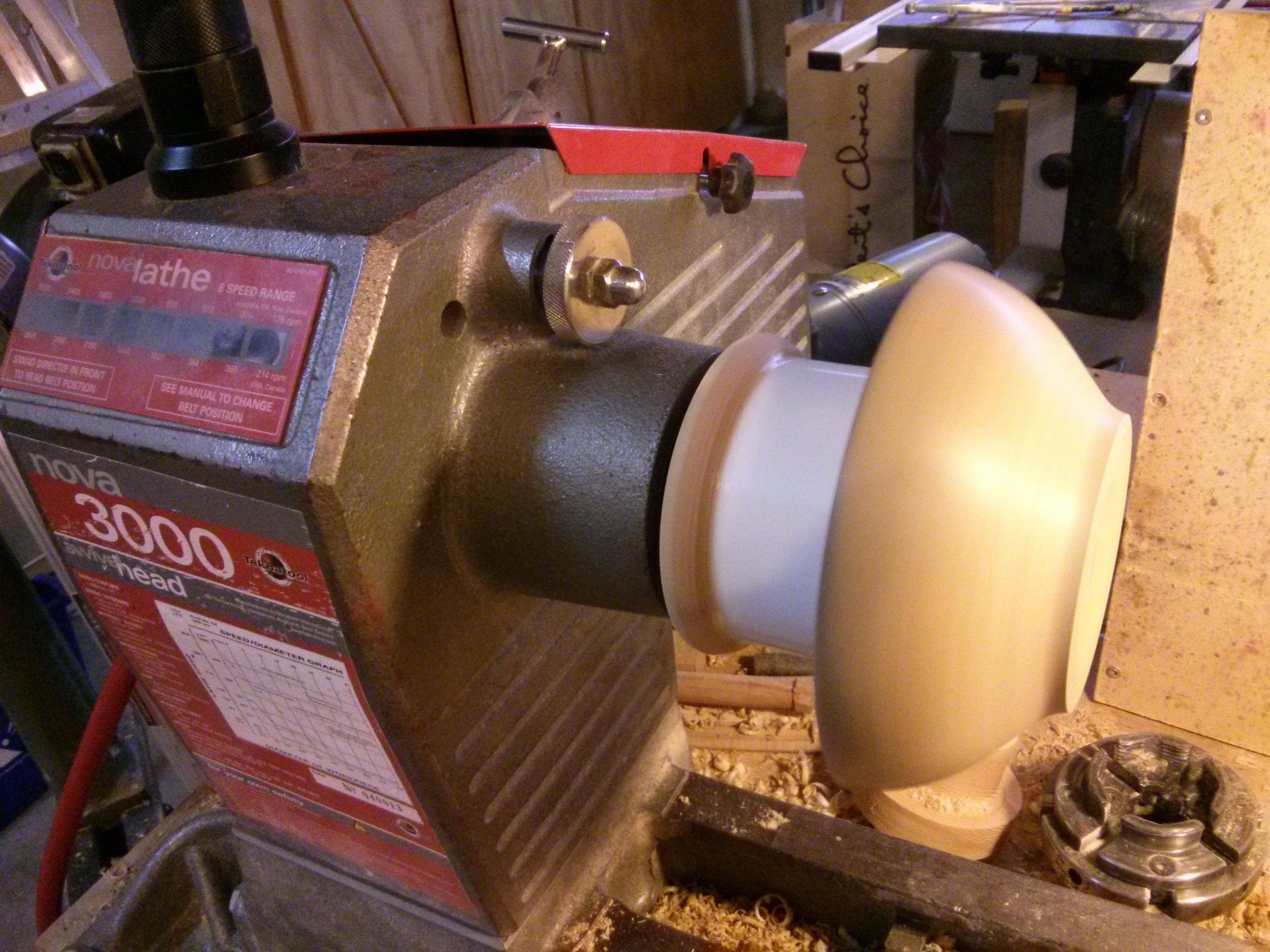As the size of the bowls I’ve been turning has gotten larger the need for a vacuum chucking system has become greater. This is not so much for holding a bowl while doing the bulk of the turning but mostly for at the end when removing the tenon used to hold it in a chuck and cleaning up the bottom. The traditional way of doing this is with a jam chuck but those are a little fussy to get right and need to be sized for each bowl. Another popular method is to use something like cole jaws that can be customized to hold a bowl from the rim. These work but they are expensive and there is still a size limit. The method that I had been using was a bit of a cross between those methods. I have a set of flat jaws that I can screw pieces of wood to and then make something like a jam chuck but with the adjustability of a chuck. This worked really well since it could be set up to work with a few different sizes of bowls. The problem was that I reaching the limits of where I felt safe using it as I started turning larger sized bowls more often.
The beauty of a vacuum chuck is that the larger you go the stronger it gets so it actually works better as the size of the bowls gets larger. The amount of force holding a bowl onto a vacuum chuck is related to the amount of vacuum developed and the area on which it acting so as the chucks (and therefore area) get larger the force holding the bowl on gets larger.
Early this year I decided that it was time to do something about it. The first thing I needed was a source of vacuum and after a bit of research and looking around I settled on a used Gast rotary vane pump that I found on ebay. This is an oilless pump capable of pulling 4.5 cfm and reaches about 24 mm Hg while in use.
The next thing I needed was a way to connect it to the lathe. This is fairly simple since there is a vacuum adapter fitting sold for my lathe that simply attaches to the hand wheel. The rest of the equipment I needed included:
- A liquid filled vacuum gauge
- A needle valve to regulate the level of vacuum
- A small in-line gas filter to protect the pump from dust
- A cross fitting to connect everything
The fitting for the lathe fit on one side of the cross fitting with the needle valve on the other side, the gauge on the top and the air hose connected to the bottom.
The in-line filter is attached in the middle of the airline before it gets to the vacuum pump. This is important because sanding dust will get sucked into the system while it is in use and it could damage the vacuum pump.
The air hose is then connected to the vacuum pump. The other thing that is needed are different sized chucks to hold the bowls on the lathe. There are commercial versions available but I found it fairly cheap and simple to make my own using different sizes of PVC fittings, left over construction lumber and craft foam. Basically I made wooden face plates from the construction lumber by drilling and tapping pieces to fit the threads on my lathe. I then trued them up and cut a groove for the size of fitting I wanted to use and then glued the fitting into the groove. On the open side of the fitting I fastened some close celled craft foam to help it form a seal with the bowls without causing damage. So far I’ve only made three different sizes but those seem to work for a wide variety of bowl sizes.
Overall I’m very happy with how well the system works and only wish that I had done it sooner. Once I ddecided to do it I was able to find some great resources online then filled the gaps by talking to Beverly Pears from the Greater Vancouver Woodturners guild who had the same lathe and recently set up her own system. One of the best online resources I found was on the Golden Horseshoe woodturners website with a wealth of information.
